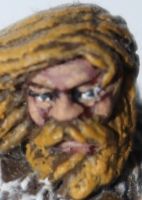There are three very different tactics used with chariots:
-Transport (where warriors are brought to the front line, and can be picked up when things go wrong later on)
-Platform (for archers or javelin throwers, allows for a relatively stable ride, easy use of longer bows and carrying of loads of ammunition)
-Scythed (actually charging towards the enemy, and when the horses evade, the scythed wheels are supposed to do quite some damage to the frontline)
The first was the main use in (British) Celts, the second type much used in Mesopotamia, Egypt as well as by the Myceneans (as described in the Iliad - I reckon the guy wearing the Dendra panoply [
http://media.muhlenberg.edu/addons/albu ... 225251.jpg ] was happy with that, as walking much would be tiring, while riding a horse should prove impossible in that suit!), while the last is mostly Persian. Although chariots are quite poor in various ways (most importantly requiring large flat areas to work), ancient cavalry wasn't all that great either, with reins, saddles and stirrups being in early development or entirely absent. As these essential items improved (and horse breeding presumably delivered increasingly strong horses too), chariots became obsolete. Which didn't stop Leonardo from designing some improved versions for a Renaissance comeback, I have to add...

 Top
Top Top
Top Top
Top Top
Top Top
Top Top
Top




